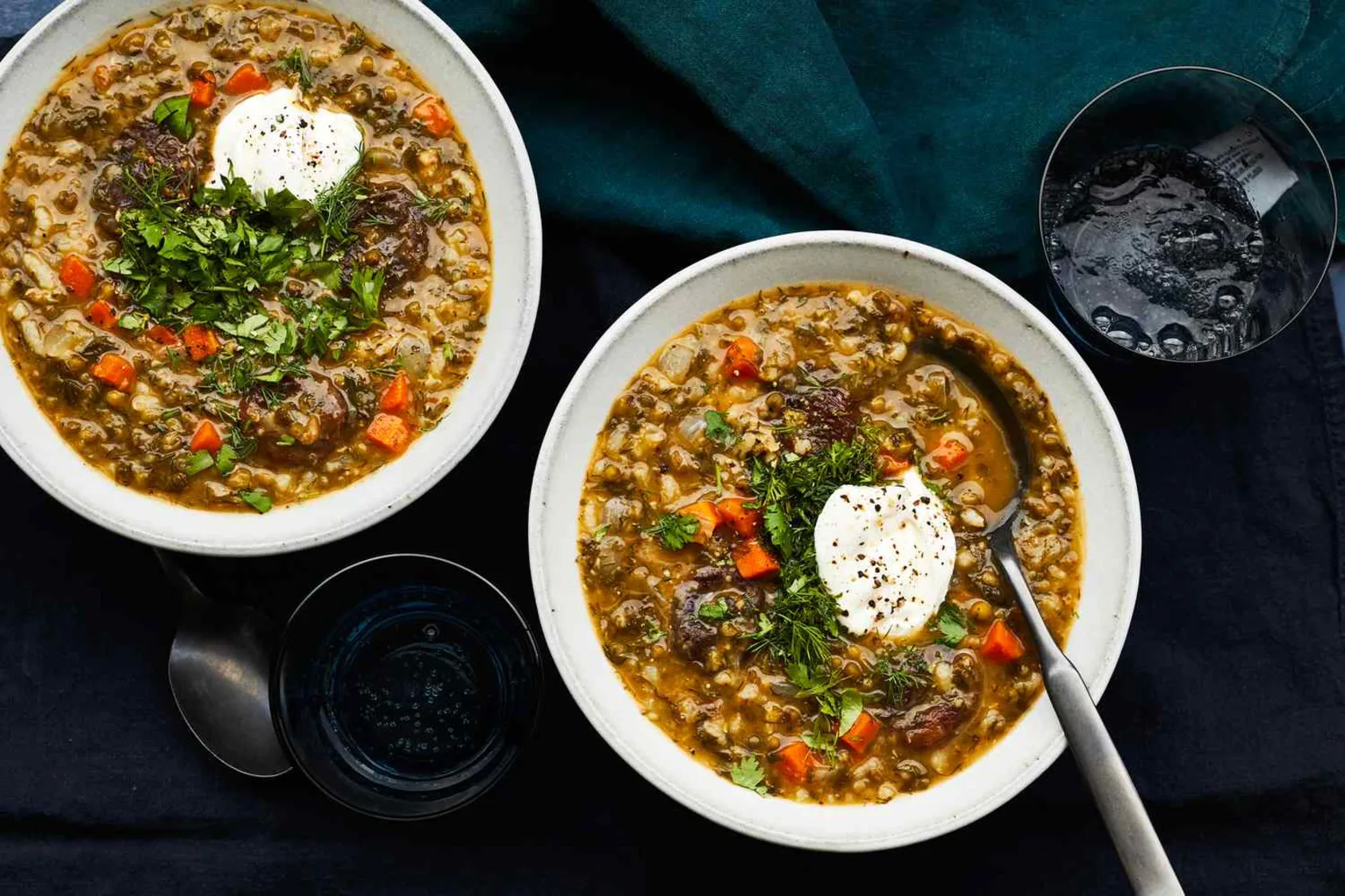
Mashhurda
Mung bean soup with rice and meat, traditionally served during Ramadan.
Ingredients
- •Mung beans
- •Rice
- •Lamb
- •Onions
- •Carrots
- •Herbs
- •Spices
Instructions
Cook Beans
Boil mung beans until soft
Prepare Meat
Cook meat with vegetables
Add Rice
Add rice and continue cooking
Season
Add herbs and spices
Mashhurda is a hearty and nutritious soup that holds a special place in Uzbek cuisine, particularly during the holy month of Ramadan. This comforting dish combines tender mung beans, rice, and meat in a flavorful broth enriched with vegetables and aromatic herbs.
The name "mashhurda" comes from Persian words meaning "famous soup," reflecting its popularity and significance in Central Asian culinary traditions. It has been a staple of Uzbek iftar meals for generations, providing a nourishing way to break the daily Ramadan fast.
The preparation of mashhurda begins with cooking mung beans until they're perfectly tender. Meanwhile, chunks of lamb or beef are sautéed with onions and carrots until golden brown. Rice is added to the pot, along with the cooked mung beans, creating a thick, satisfying consistency. The soup is finished with a generous handful of fresh herbs like dill and cilantro, while spices such as cumin and black pepper add depth to the flavor.
While the basic recipe remains consistent, many families add their own twist to mashhurda. Some versions include additional vegetables like potatoes or turnips, while others might use different types of meat or adjust the ratio of beans to rice. In some regions, a dollop of qatiq (Uzbek yogurt) is added just before serving for extra tanginess.
In Uzbekistan, mashhurda is traditionally served piping hot in deep bowls, often accompanied by fresh non (flatbread) for dipping. During Ramadan, it's particularly valued for its ability to provide sustained energy throughout the night. The soup is often garnished with extra fresh herbs and sometimes a squeeze of lemon juice for brightness.
From a nutritional perspective, mashhurda is a well-balanced dish providing approximately 400-450 calories per serving. The mung beans offer plenty of protein and fiber, while the rice provides complex carbohydrates for energy. The soup is naturally gluten-free and rich in vitamins and minerals from the vegetables and herbs. However, those watching their sodium intake should be mindful of added salt, and the dish contains meat, making it unsuitable for vegetarians unless modified.
